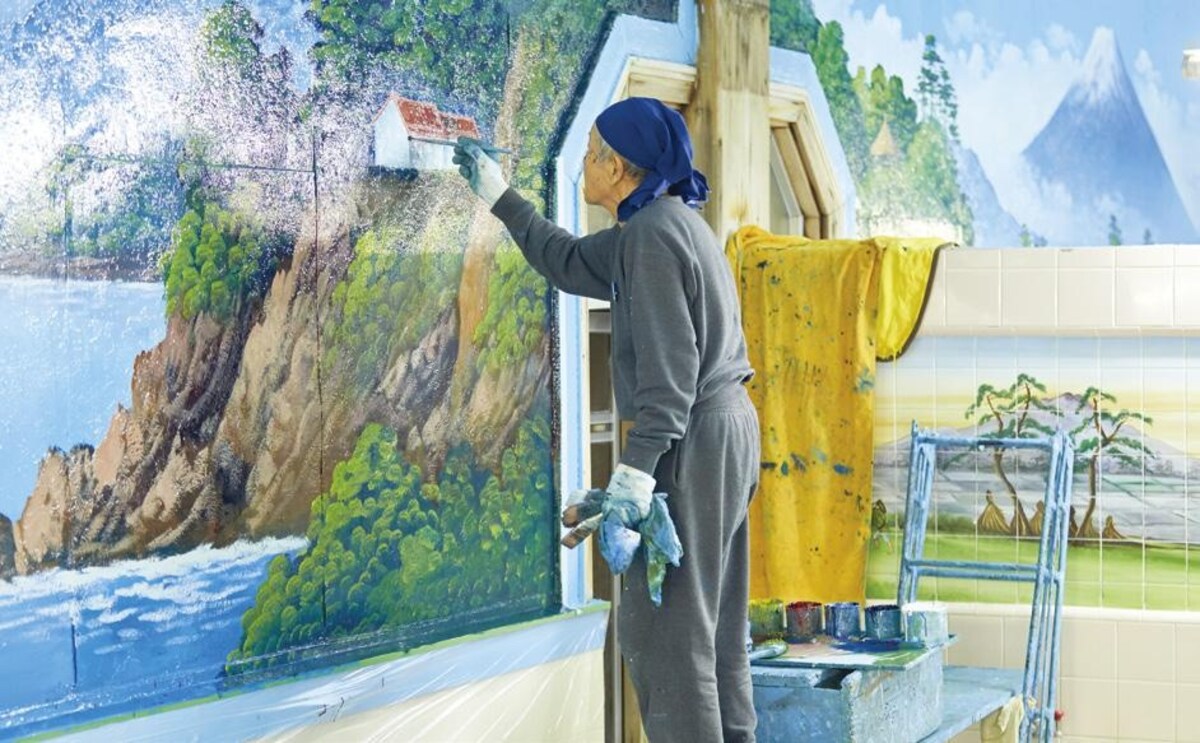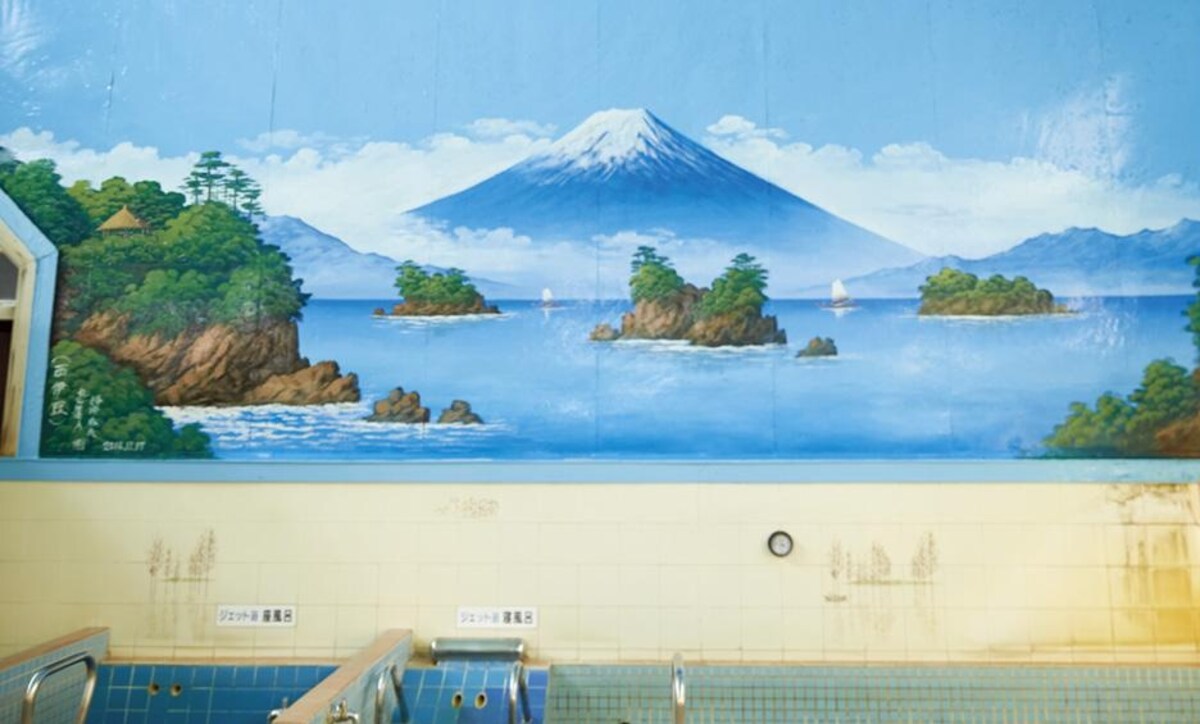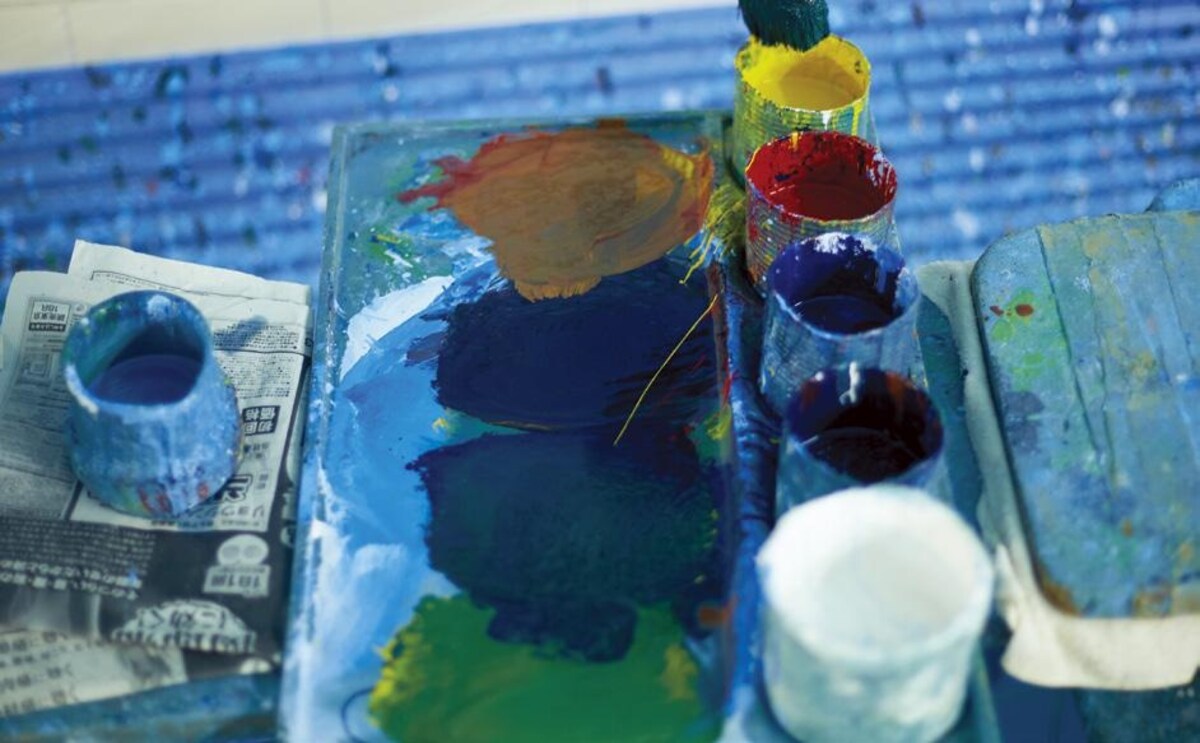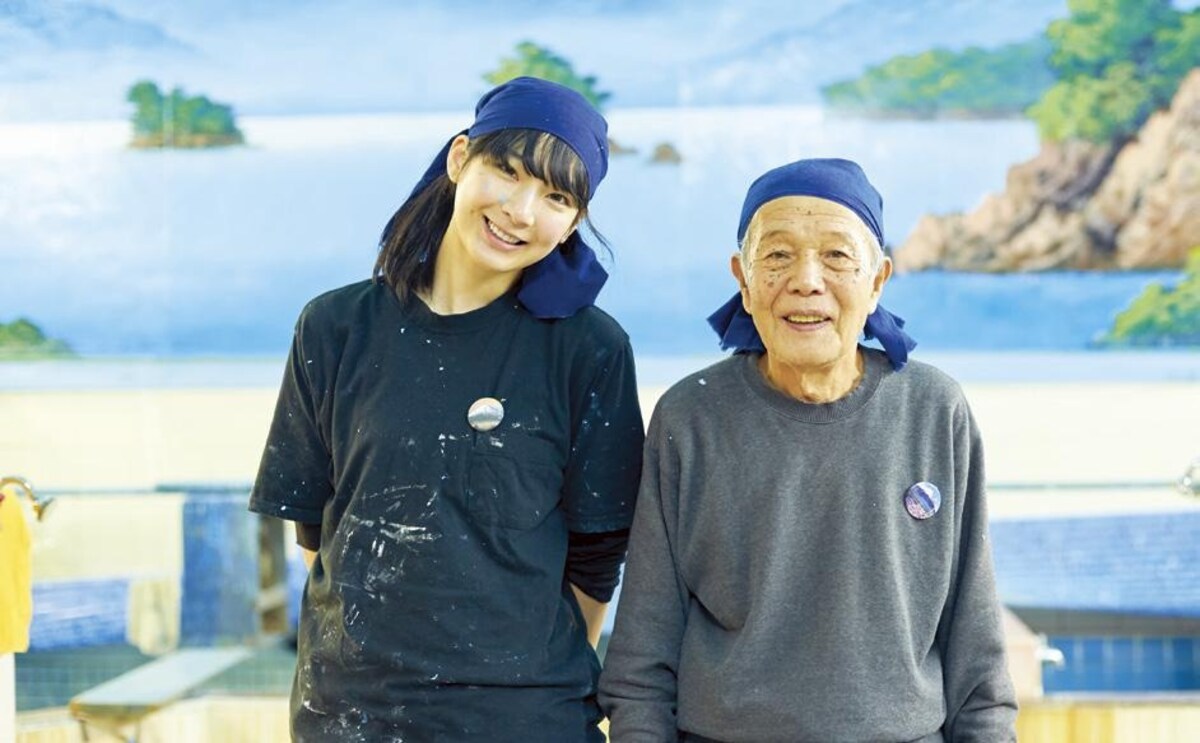The Ephemeral Art of Japanese Bathhouses
Sento painters are artists who specialize in adorning the walls of bathhouses. Currently only three people remain in this distinctively Japanese profession. Kiyoto Maruyama, who boasts an impressive 66-year career as a sento painter, is one of those three.
By Highlighting Japan
https://www.gov-online.go.jp/eng/publicity/book/hlj/html/201903/201903_07_en.html
While wielding his brushes at a bathhouse in Tokyo, Maruyama took the time to speak about his art.
“Bathhouse painting began in the first year of the Taisho Period (1912-26) at Kikaiyu, which was in the Kanda-Jimbocho area,” says Kiyoto Maruyama. “Kikaiyu’s owner, who thought the wall was too drab, asked a painter to draw Mount Fuji on it. That painting became famous, and the spread of its popularity brought about the birth of the profession of sento painters.”
Kiyoto Maruyama intimately knows the history of the painting style known as bathhouse painting or scenery painting. Born in 1935, at eighty-three he is the oldest sento painter in Japan and an expert among experts who has painted between 10,000 and 12,000 murals over the course of his 66-year career.

https://www.gov-online.go.jp/eng/publicity/book/hlj/html/201903/201903_07_en.html
“My uncle—the late Kikuo Maruyama—made billboards at an advertising agency specializing in public bathhouses,” he notes. “Since I liked painting pictures, I got into the profession at the age of eighteen.”
With the birth of sento paintings, a new business of putting up advertisements for businesses and neighborhood shops underneath the paintings was born. Advertising agencies would provide one free painting per year in return for allowing them to place advertisements there. Maruyama was a full-time painter for one such advertising agency, although this business has declined along with the decrease in the number of public bathhouses. Nowadays bathhouse owners commission the type of image they want painted.
While Mount Fuji is the most iconic image for bathhouse murals, there were sento with artwork of the Seto Inland Sea, lighthouses, Buddhist goddesses and other auspicious designs. Paintings of anime characters were popular in the 1970s, Maruyama adds, reminiscing on the originality of individual bathhouses.

https://www.gov-online.go.jp/eng/publicity/book/hlj/html/201903/201903_07_en.html
Since the murals are always in contact with hot water and exposed to bright lights and sunlight, the colors fade and the paint tends to peel quickly. Because of this, they are repainted every three to four years, and each new painting goes over the previous one. In other words, this artwork is fated to disappear. “While this is sad, it also has a uniquely Japanese romantic feel to it,” Maruyama comments.
Maruyama mostly paints blue seas and skies, white clouds and fresh green leaves, but he only prepares five colors: white, red, yellow, black and ultramarine blue. He creates every other hue on his custom-made palette while standing in front of his enormous 5.4 by 6.3-meter canvas, and generally finishes a single painting in around three and a half hours.
Maruyama doesn’t make a rough sketch on the wall or even create one on paper. He simply reproduces the scenery in his head. There is only a single word to describe the process—magnificent.
Seriously studying Maruyama’s every brushstroke is Mai Katsumi, his first apprentice.
“I’m impressed by his uncompromising and ambitious stance on painting. He’s easygoing and kind but savvy—personality traits that show in his paintings,” says Katsumi about a charmed Maruyama. He teaches his apprentice everything he knows, and smiles fondly as he mentions how he especially wants to teach her how to paint leaves and clouds. If you ever have the chance to admire one of Maruyama’s paintings in person, be sure to take a close look at his subtle brushwork on such elements.
“It’s been fun to be able to do this for so long, so I’ve never once thought it to be unpleasant,” he notes. “And it’s a job you can be active in all your life, you know? I’m glad I chose this profession.”
Maruyama also gets requests to paint murals in private houses, retirement homes and other places, and he pursues related activities such as workshops and events. His happiest moment in the midst of this incredibly busy life was when he painted a bathhouse mural side-by-side with his granddaughter and apprentice. “That was only possible because this is a job I can keep up my entire lifetime,” acknowledges Maruyama, with the biggest smile on his face.





